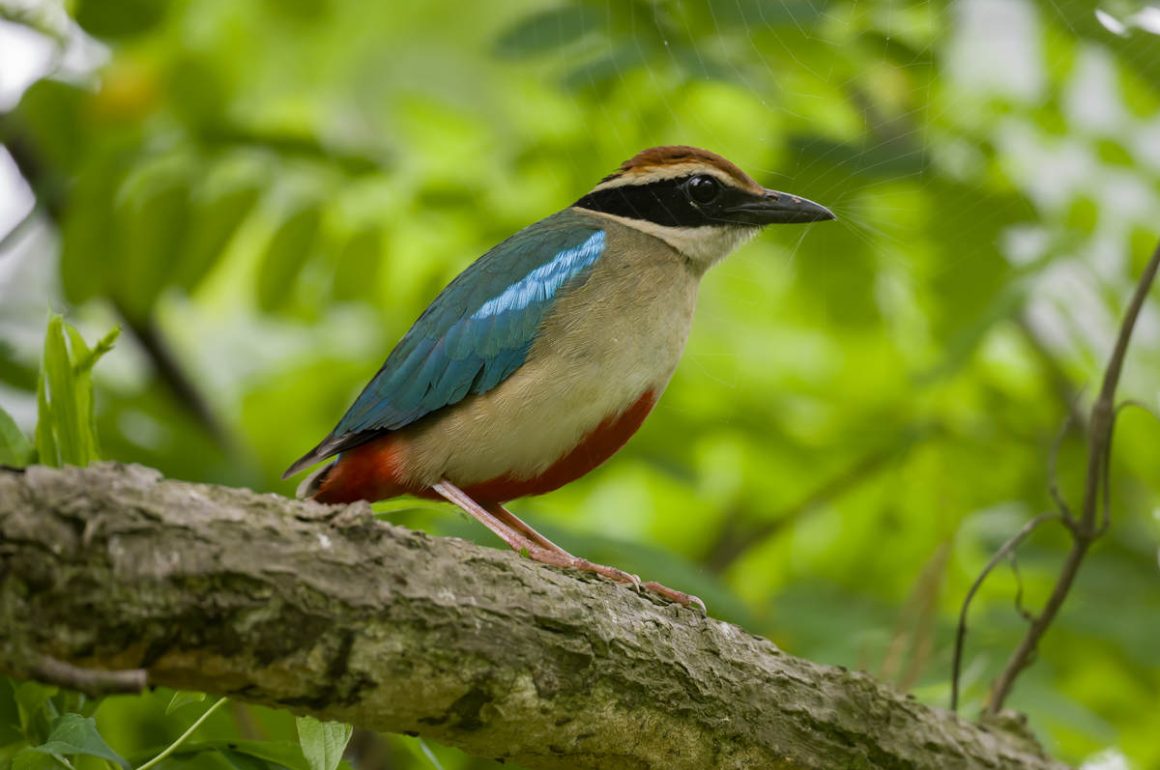
It is kind of rare to see a Fairy Pitta during Shanghai’s spring migration as those passing through are all adults rather than inexperienced chicks, and they are in a rush getting to their breeding grounds – but I was lucky.
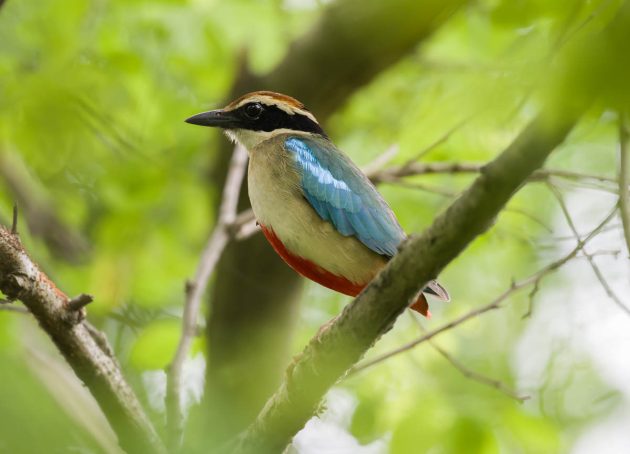
The Fairy Pitta is listed as Vulnerable, with the HBW that the species is “rare; global population probably no more than a few thousand individuals”.
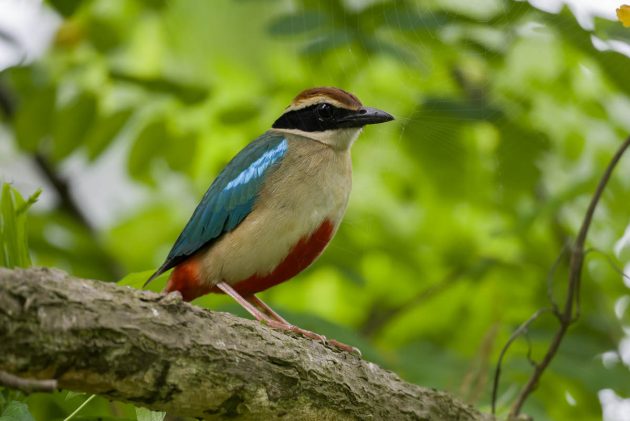
While the sexes are alike, my guess is that the Fairy Pitta in the photo is a male given its early arrival date in Shanghai.
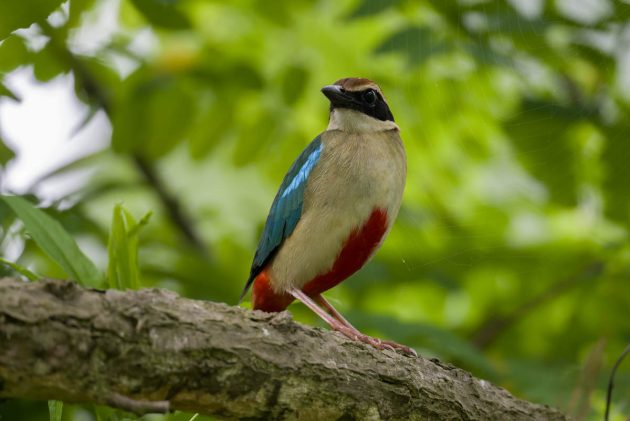
For once, the Latin species name nympha fits well – “a mythological spirit of nature imagined as a beautiful maiden inhabiting rivers, woods, or other locations” (Oxford Languages).
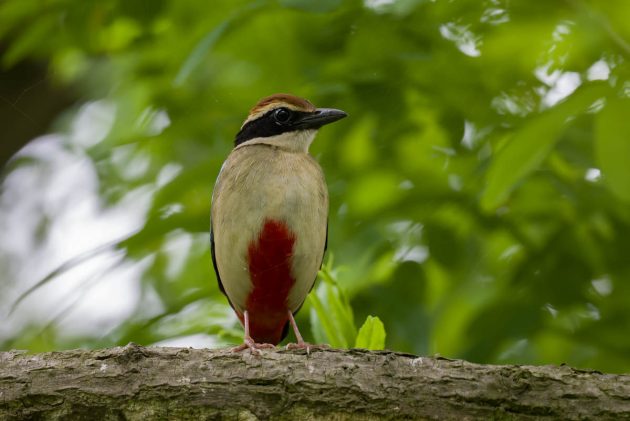
Much like a mother cutting spaghetti into small pieces before feeding her kid, Fairy Pittas cut mealworms into small pieces before feeding them to their younger chicks – which resulted in a research paper with the somewhat grandiose title “Sundering of earthworms by the Fairy Pitta (Pitta nympha): an unexplored strategy of prey preparation for brood provisioning by avian vermivores”. Why cutting mealworms into pieces is called a strategy is a bit of a mystery to me, but then I am not an ornithologist.
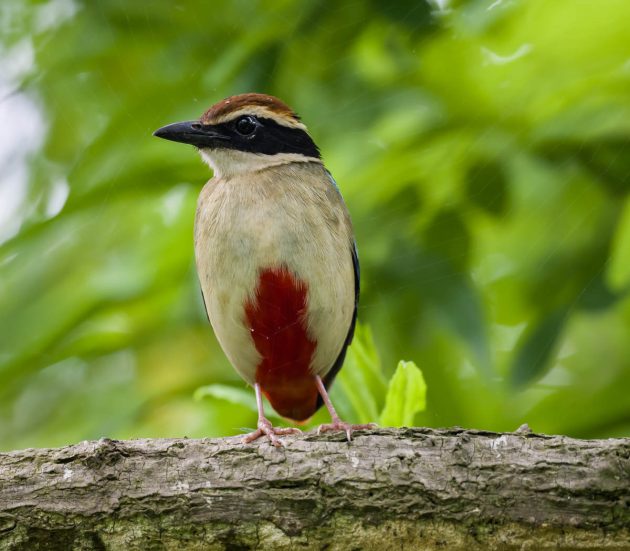
And how do Fairy Pittas get injured and possibly die? One study in Korea found that 37% of injuries and deaths were caused by predation by natural enemies, another 37% (a worryingly high number) by window strikes, 10% by traffic accidents, 7% each by flooding and dehydration, and 3% by human disturbance.
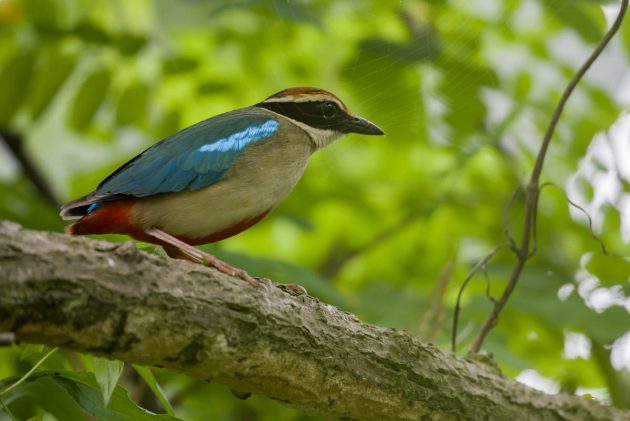
The Large-billed Crow (video) is one of the natural enemies – in the study above, it predated 19 eggs from four pitta nests. This should not be a problem in Shanghai as the pitta has not been reported to breed here.
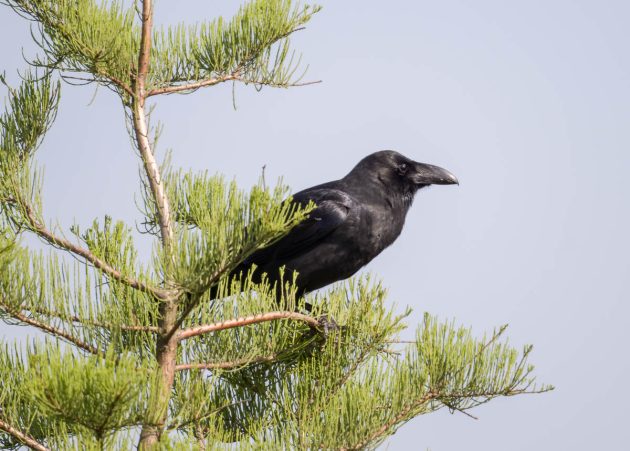
Is it worth a scientific paper if a Large-billed Crow eats a fish? Well, yes, if you phrase it as if it is, such as in this paper titled “Marine and terrestrial food chain links”.
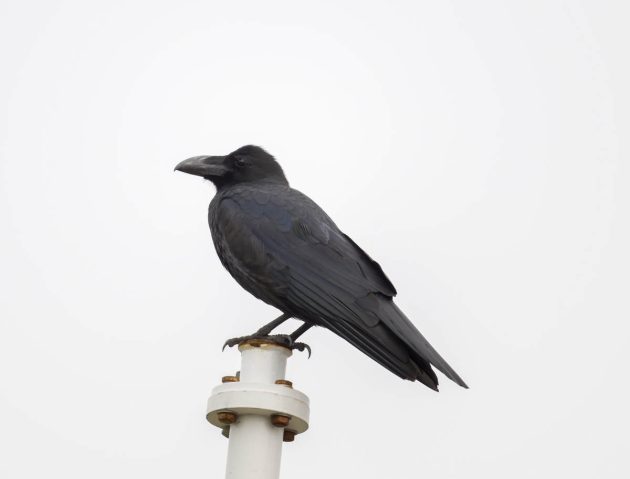
In another paper, Large-billed Crows in Japan were made to listen to either the Japanese language or the Dutch language. It seems they can make some distinction between the two: “The crows showed significantly more responses to the Dutch than to the Japanese, which suggests that they discriminate two languages with distinctive linguistic features and that they might also be more attentive to an unfamiliar language, Dutch, compared to a familiar one, Japanese.”
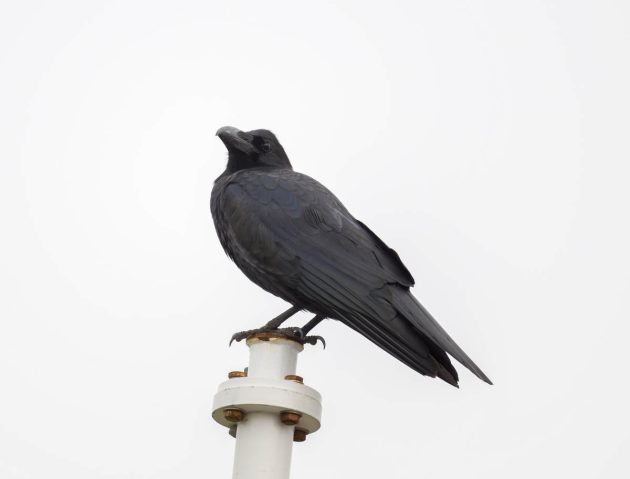
Swinhoe’s Minivet was previously categorized as Near Threatened but is now listed as Least Concern – a downgrade, or is it an upgrade really?
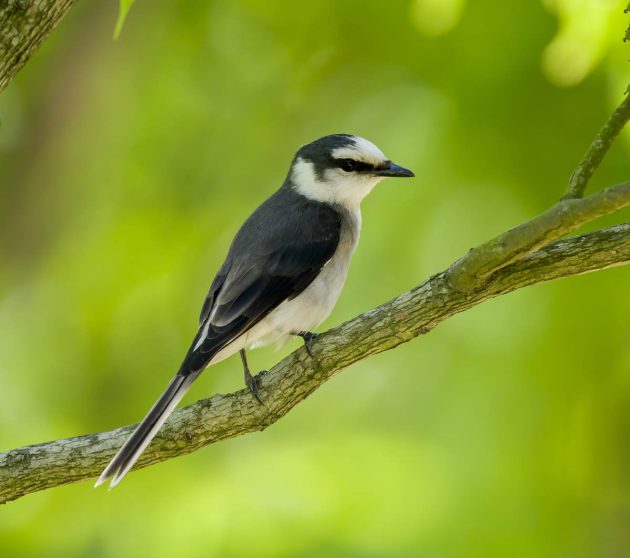
The HBW has comprehensively nothing on its breeding: “Breeding – No Information”. I guess birds are not their main focus.
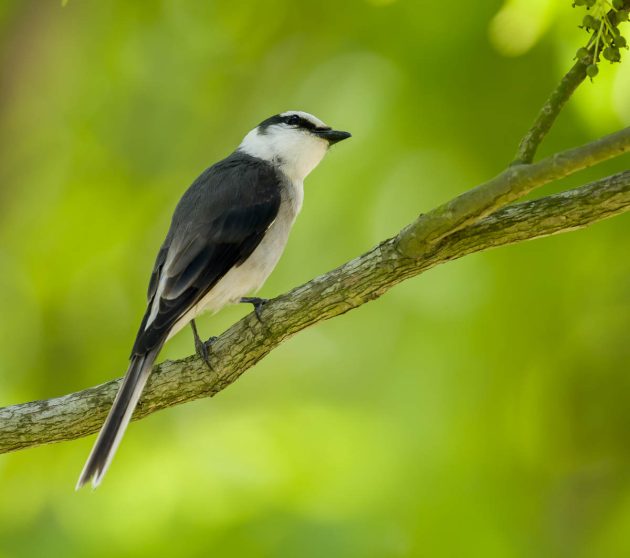
I think the photo shows a male bird, as certain parts of the head seem more black than grey.
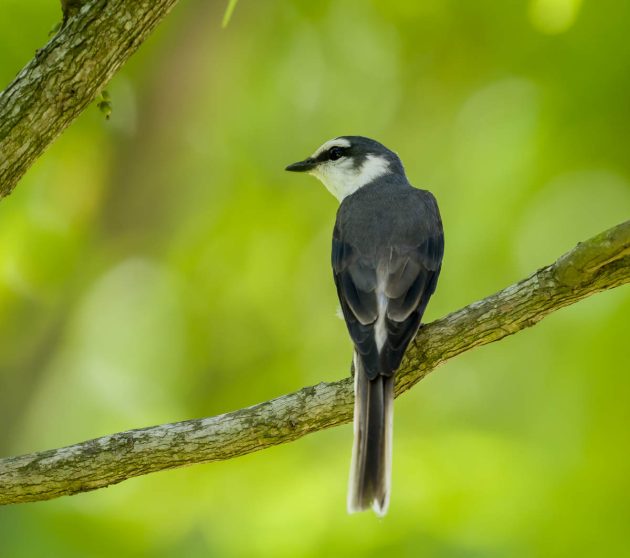
The Asian Koel is a parasitic cuckoo that is not very common in Shanghai. Different from many other parasitic cuckoos, the chick typically does not kill all its nest mates, though one or two of them may die from starvation. I guess the hosts (which include the Donald Trump of the bird world, the Long-tailed Shrike) have to be grateful, sort of.
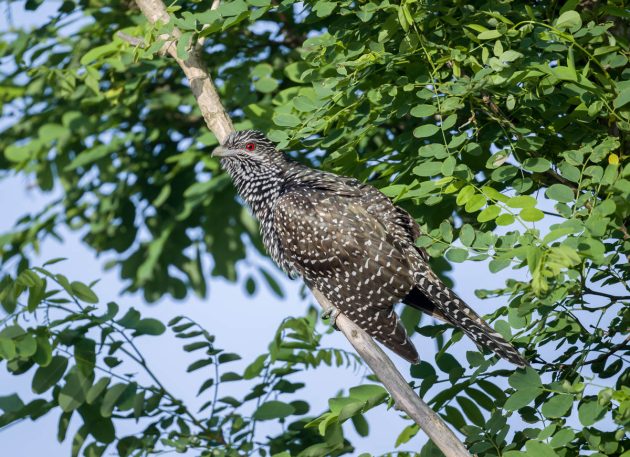
The male Asian Koel has a rather distinctive call which for me is almost the sound of Singapore. Of course, what is shown here (and in the video) is a female – kind of typical for this blog. Please state your dismay and disappointment clearly in the comments section.
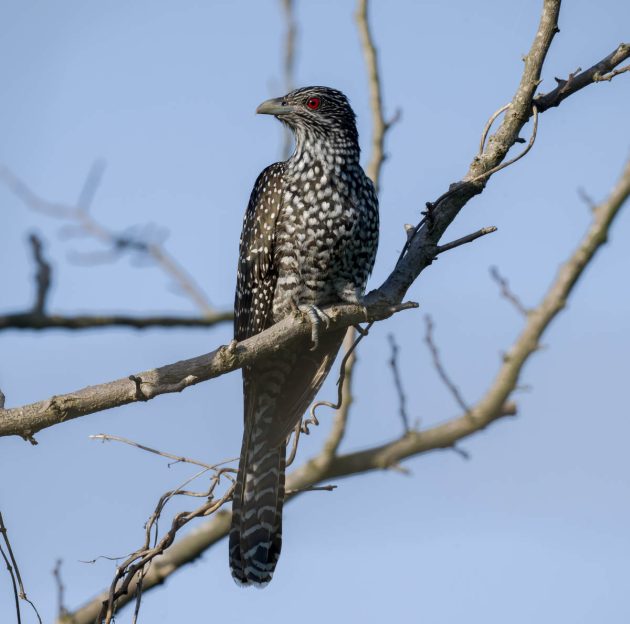
Two researchers from Pakistan analyzed the male calls, claiming that “to date, the description of vocal repertoire of the male Asian Koel has been lacking” (which sounds a bit unlikely to me, particularly given that the HBW has a whole paragraph on the vocalizations of the male, with a citation going back to 1999) and concluding with the rather preposterous statement that “Our findings enrich the biological knowledge about vocalizations of the adult male Asian Koel and provide a foundation for future acoustic monitoring of the species”. Maybe I should also include such claims in my posts: “This blog challenges the self-importance of global ornithological research and thus establishes a firm conceptual basis for further expansion of irony and sarcasm in the universe of avian-themed web entries”.
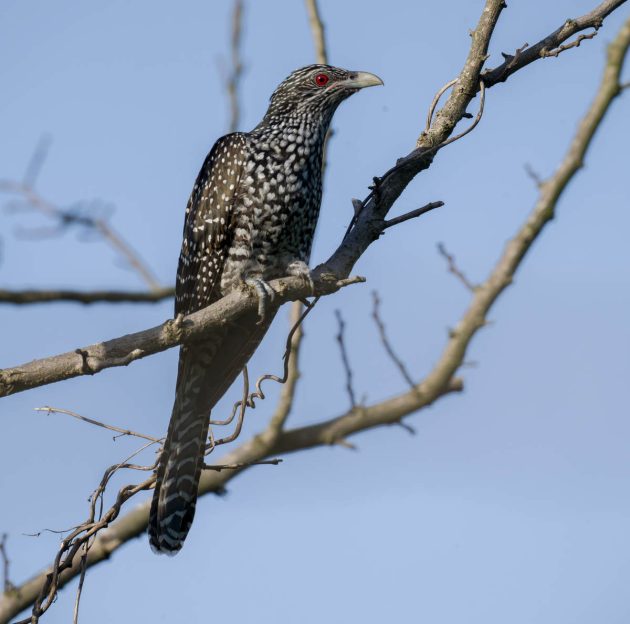
Hosting a Common Cuckoo is even worse for the hosts, as the cuckoo chick kills all its nest mates by kicking out the eggs (it hatches a bit before them).
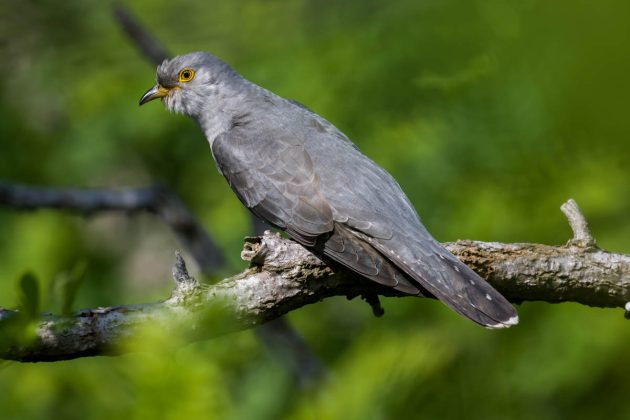
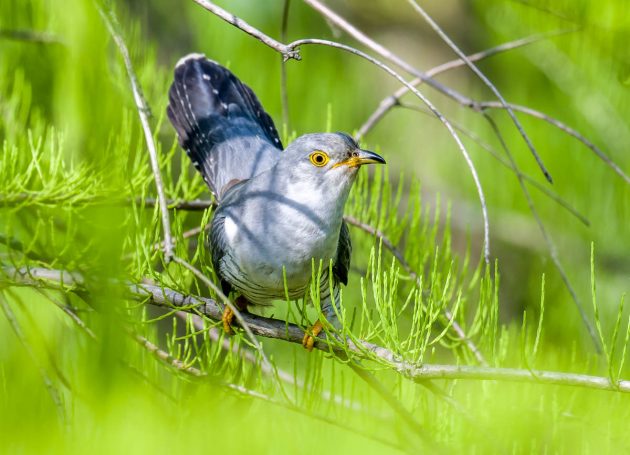
This is a rufous morph Common Cuckoo, which means it should be a female. [Correction added on Jun 18, 2023: A friend who is a much better birder than me stated that this is a Lesser Cuckoo, not a Common Cuckoo. I am sure he is right about this].
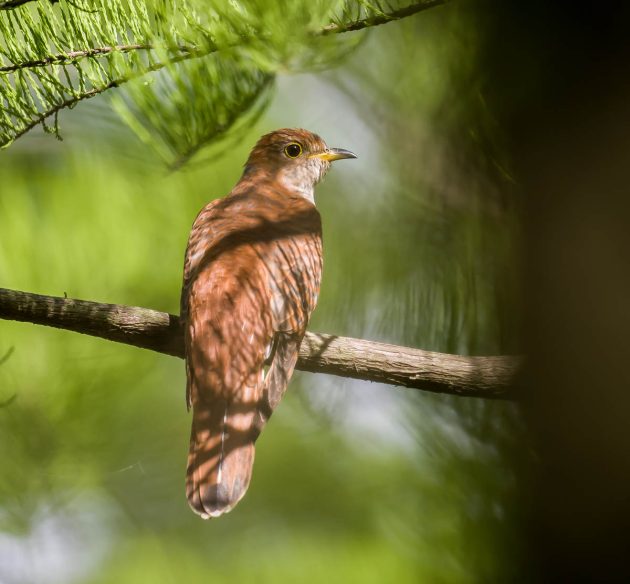
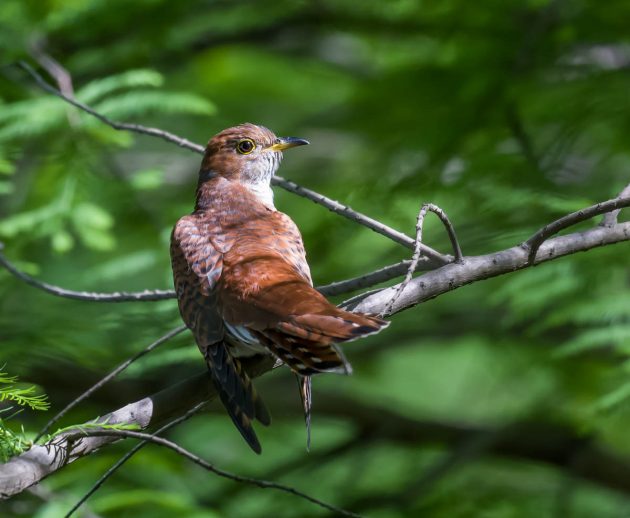
The Thick-billed Warbler is one of the main host species for the Common Cuckoo in the middle Amur River basin (source).
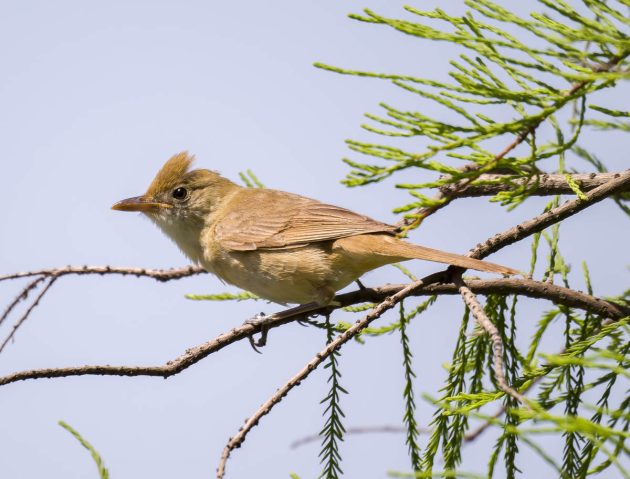
In contrast to the Oriental Reed Warbler, which is a terrible singer, this warbler sounds fairly nice. In fact, the Latin species name is aedon, “nightingale”.
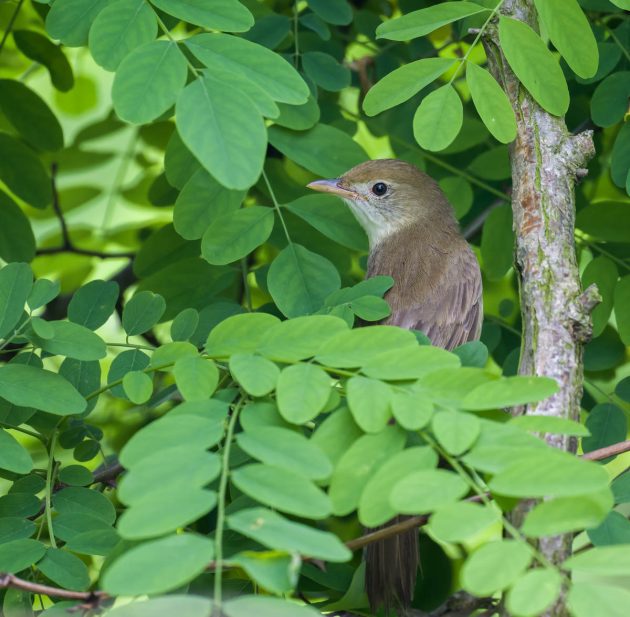
(Helpfully for those who lack nightmares, the HBW explains further that in Greek mythology, Aedon, the wife of Zethus, was changed into a nightingale when, in attempting to murder the eldest son of her fecund sister Niobe, she killed her own son Itylus.)
The Lesser Coucal resents the comparison with parasitic cuckoos – it admits that as a fellow cuckoo species, it is related to them but takes care to bring up its chicks on its own. One of them told me “How would you feel being constantly compared with Donald Trump just because you are also a human?” Good point, I think.
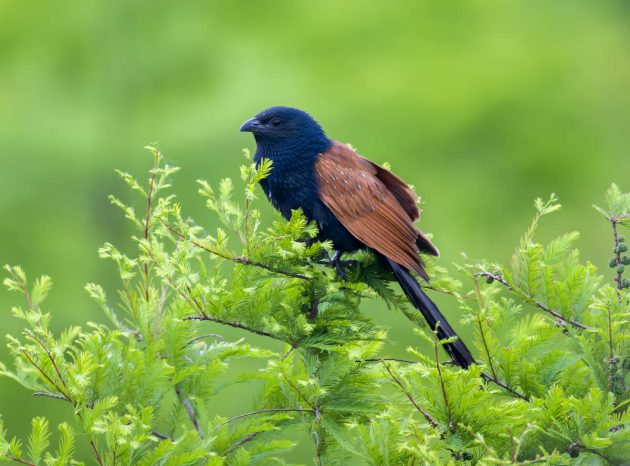
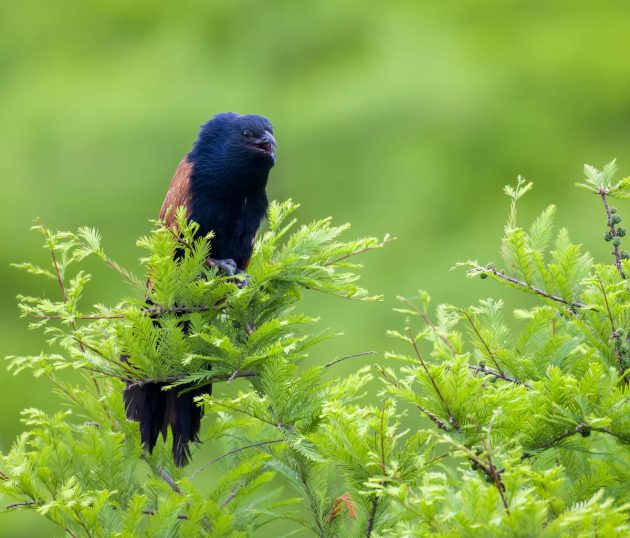
The Lesser Coucal has a characteristic vocalization that can be heard in this video (along with the usual China-typical background noise – China is not a quiet place in general).
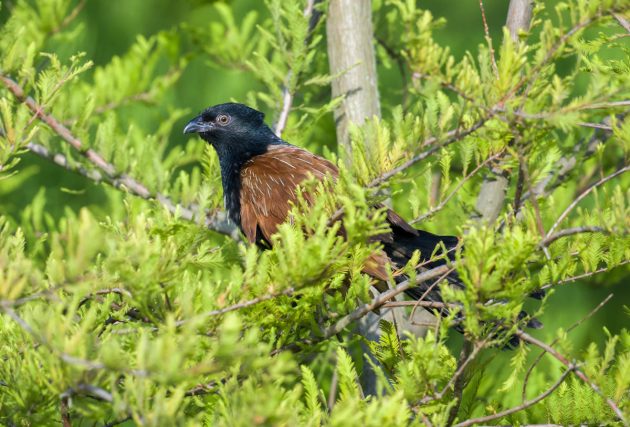
I was a bit worried about the bird in the video but a friend assured me that birds do not get seasick. I hope he is right.
I wonder what Barn Swallows did before humans started building houses. In places like Shanghai, there are virtually no vertical rocks that would allow the construction of nests as shown here.
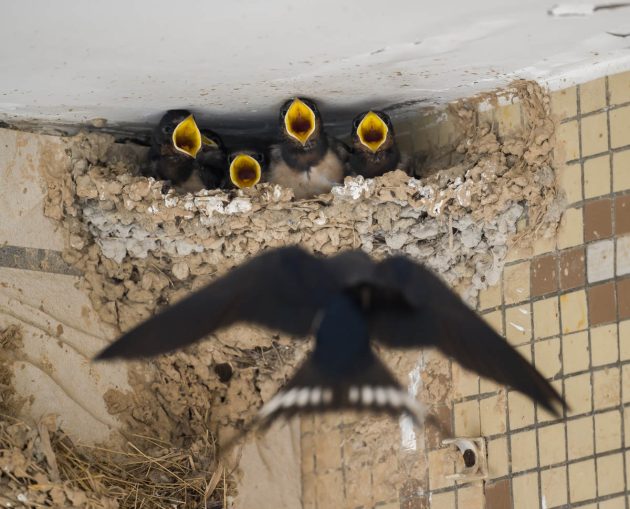

Unfortunately, the house this nest is built on is about to be destroyed – no tenant rights for birds in China, I am afraid. But at least for this season, the chicks should be ok.
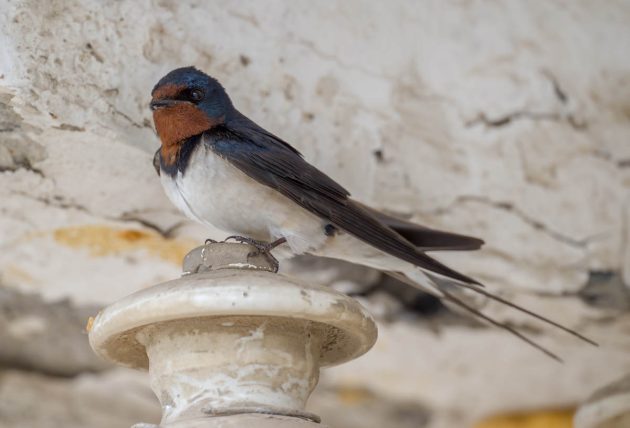
Fortunately for an unskilled videographer like me, swallow nests allow the capture of movement without having to move the camera. See the results here and here.
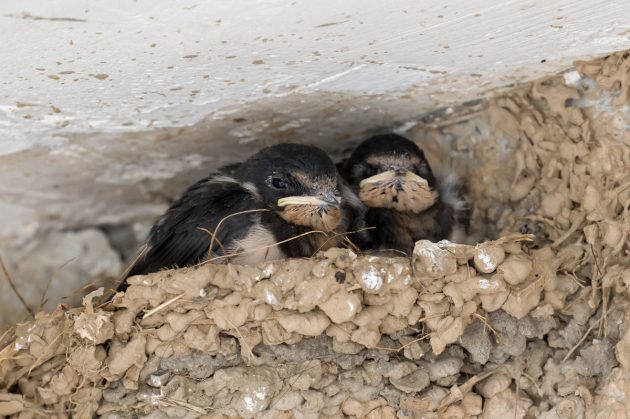
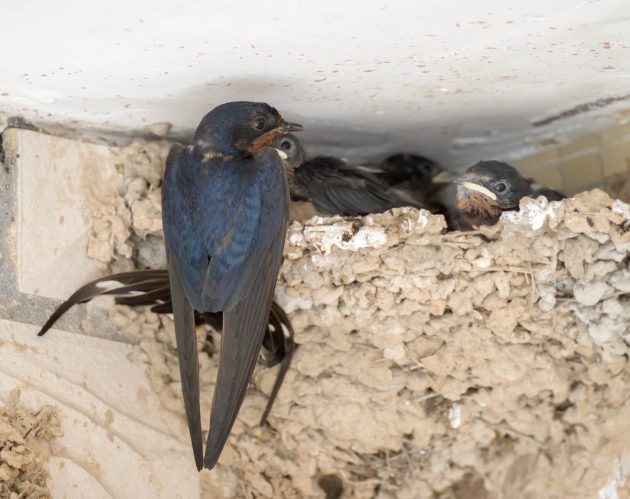
A few days later, the chicks have grown bigger …
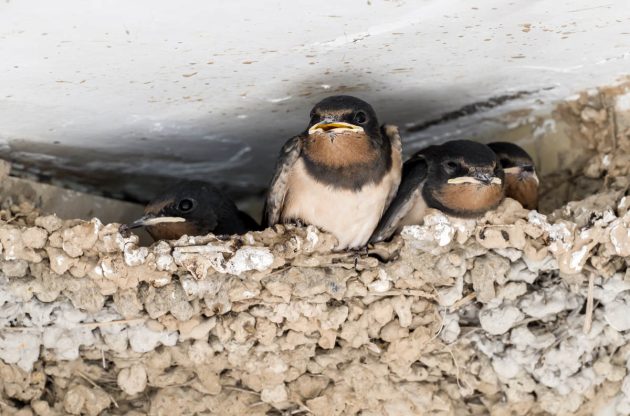
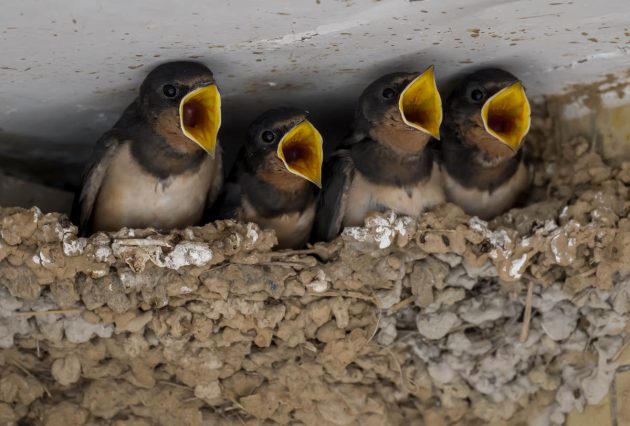
… and learned how to use the toilet (video).
As mentioned before, the Blue Rock Thrush benefits from more and more parts of Nanhui turning into concrete. Every cloud has its silver lining, said he despairingly …
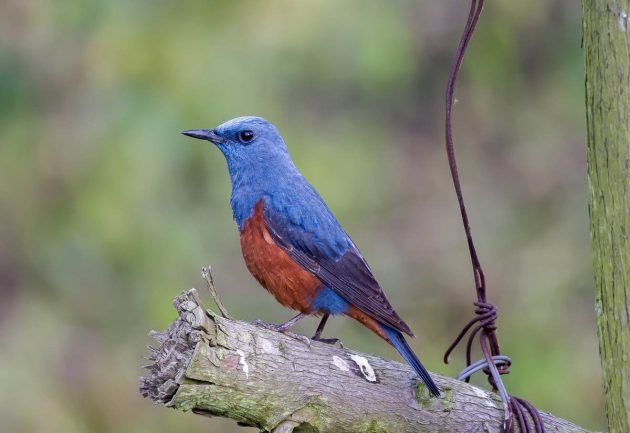
(video)
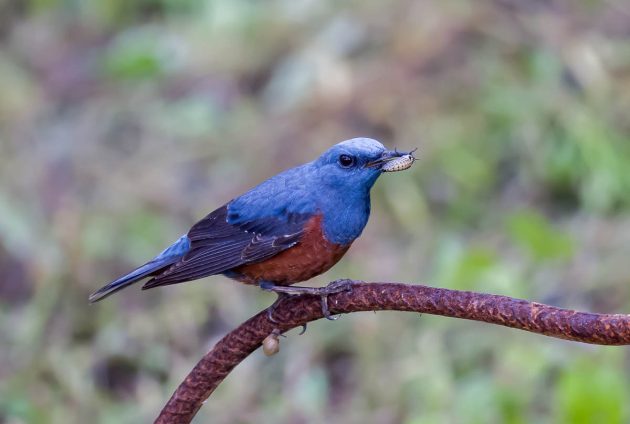
However, this will likely also mean more people in the future, something that may not be appreciated by a bird species with the Latin name of solitarius.
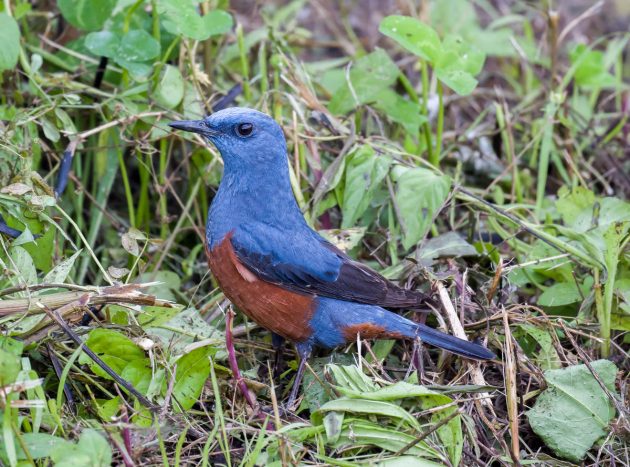
It seems that the Black-crowned Night Heron is kind of the workhorse (workbird?) of researchers looking for chemical contaminants in the environment. There are papers about Black-crowned Night Herons and …
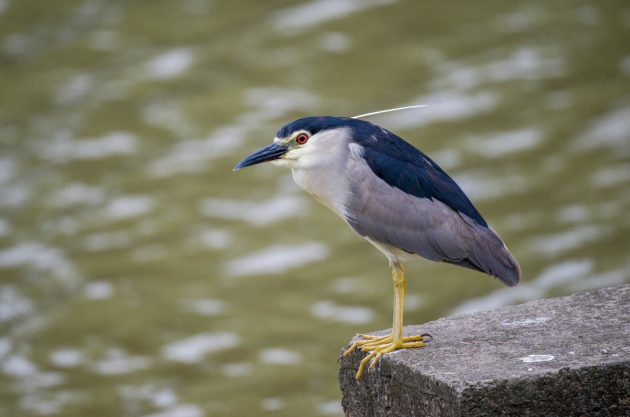
… DDE …
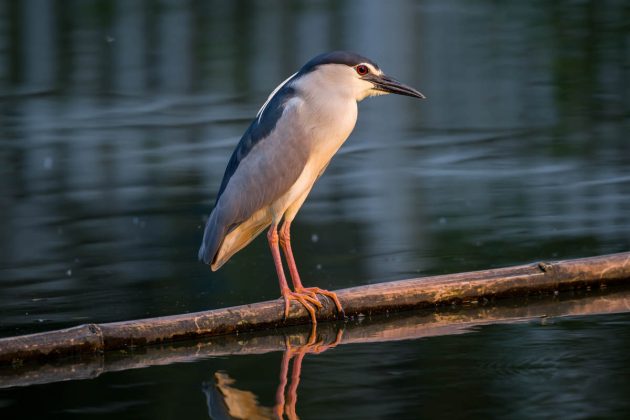
… heavy metals (not of the music type, though that could be damaging as well) …
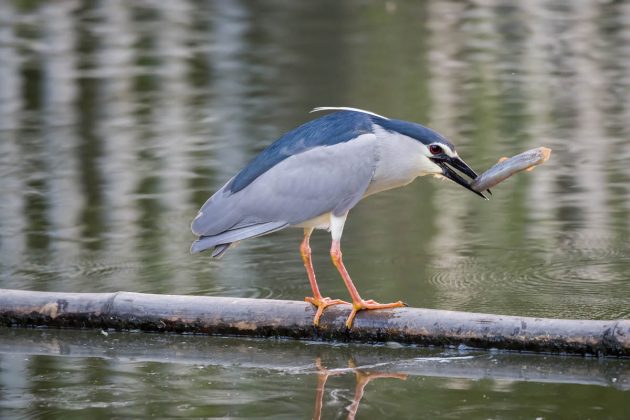
… trace elements …
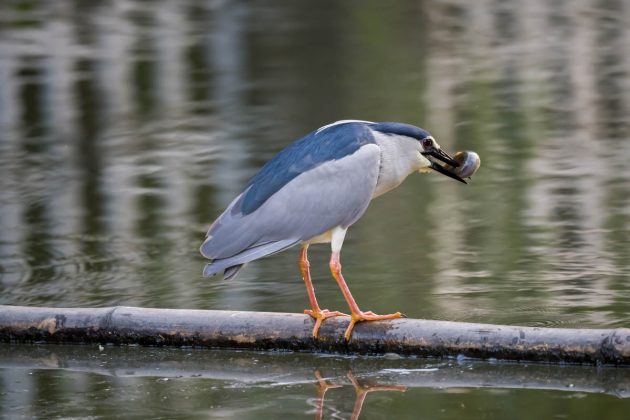
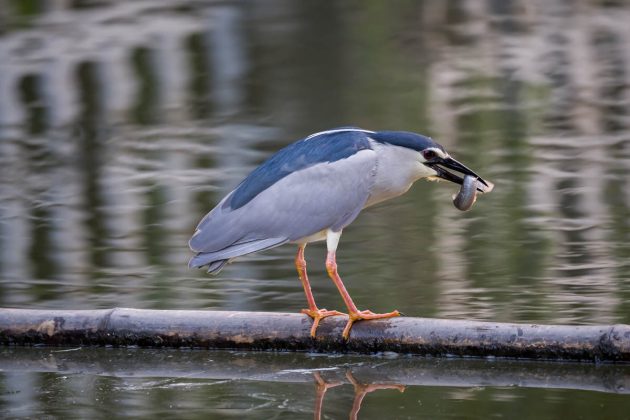
… PCBs …
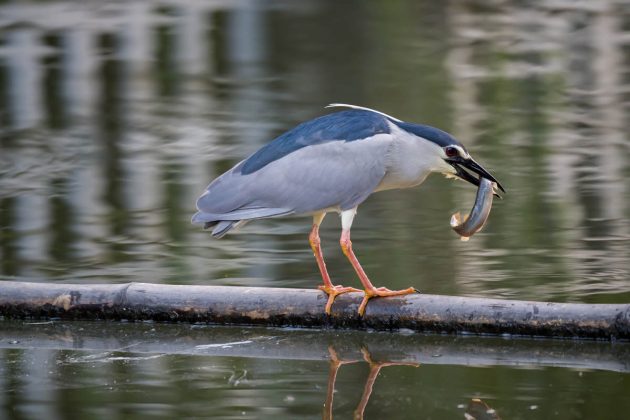
… lead (with the rather sad remark “Nestlings were euthanized at 15 d of age” – I am glad I am not doing this kind of research) …
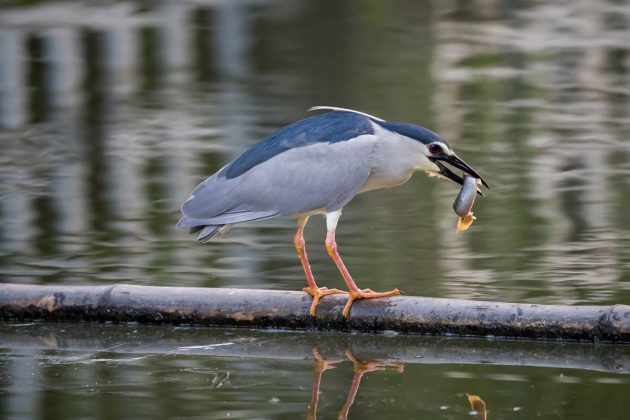
… and mercury.
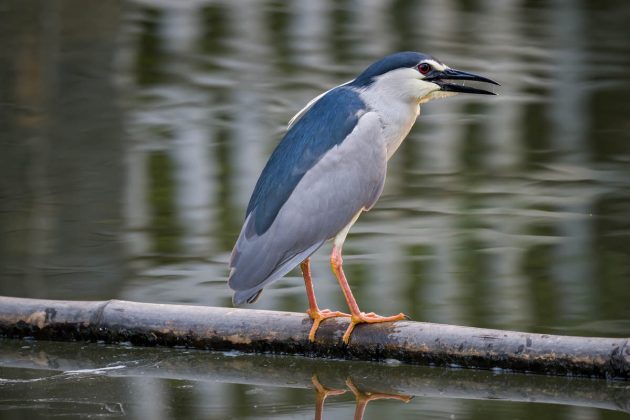
They also feature in some amateur videos, such as this one or that one.
Chinese Pond Herons look fairly harmless to you and me but some frogs would probably have a different opinion. If you want to know why, watch the video – if you are in a hurry, start at about the 0.40 mark.
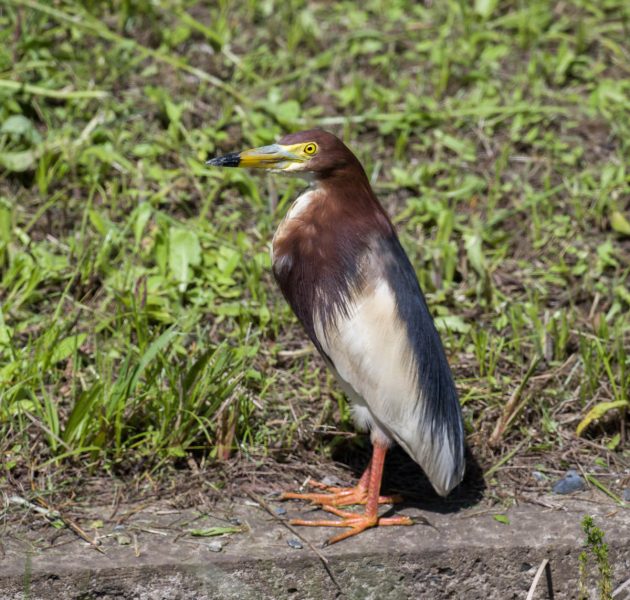
This seems to be another bird that attracts pollutants such as heavy metals, selenium, and PCBs. Poor bird.
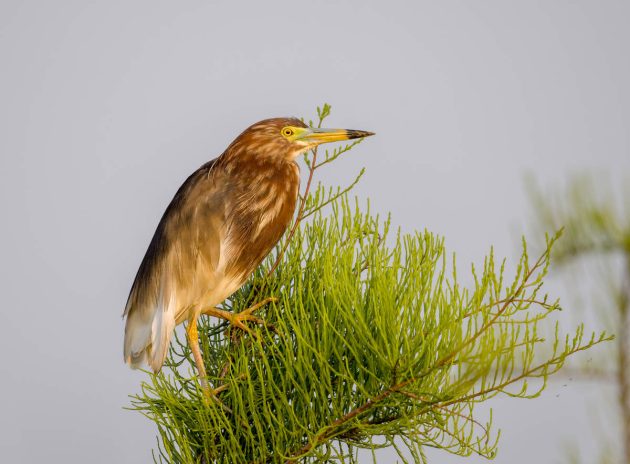
eBird calls the Chestnut Bulbul an “attractive songbird of forested lowlands and foothills”. The HBW is a bit less positive: “Medium-sized, noisy, conspicuous bulbul”, unless you think that noisy and conspicuous are positives (I certainly do not).
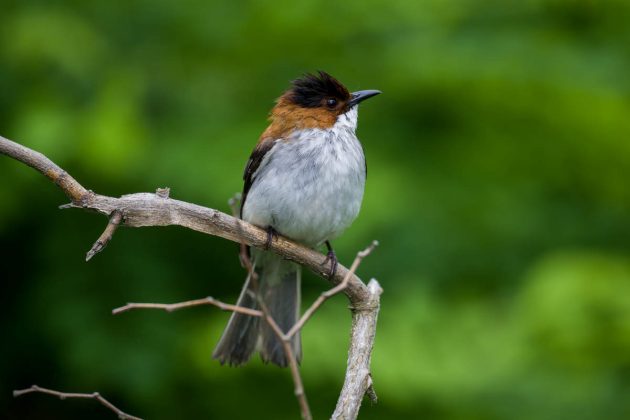
Getting near the end of the post, some birds that have been shown in these posts frequently before, but are too attractive not to show again – specifically, the Rufous-faced Warbler …
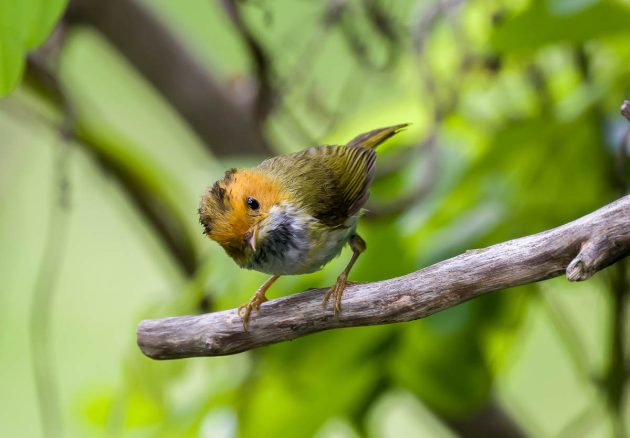
… Black-winged Cuckooshrike …
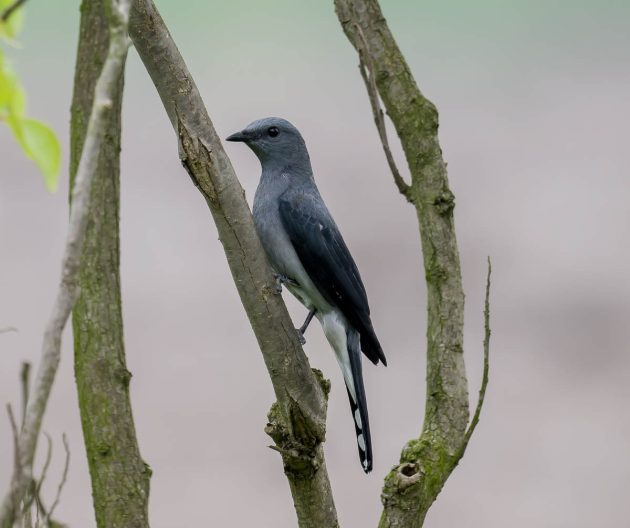
… Black-naped Oriole …
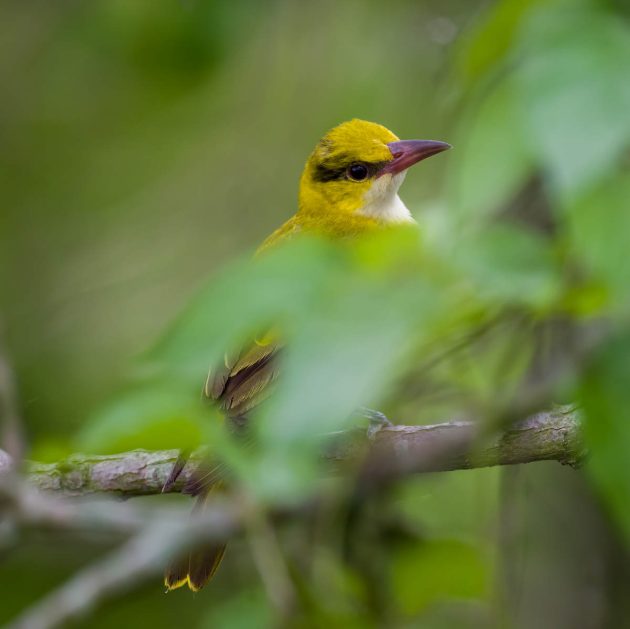
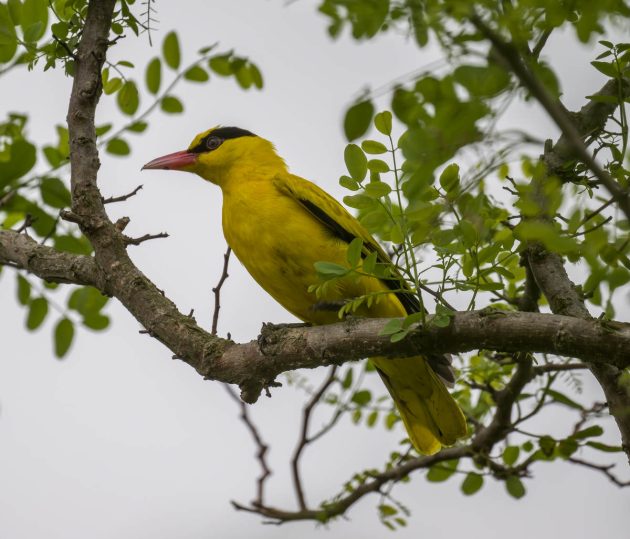
… Mugimaki Flycatcher (video) …
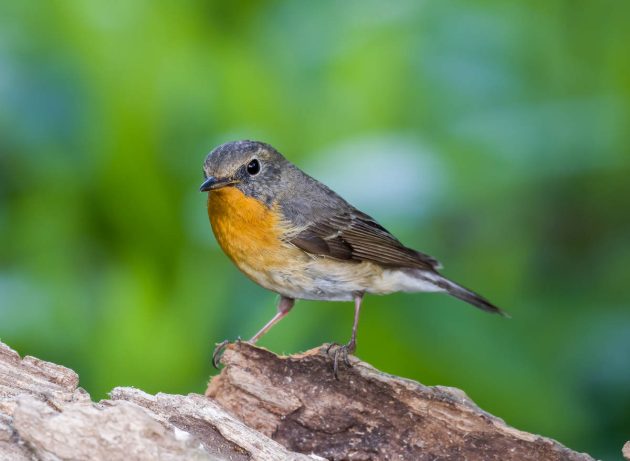
… Black Drongo …
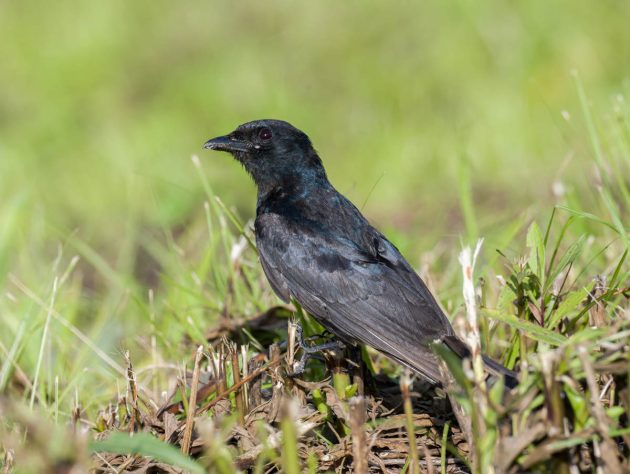
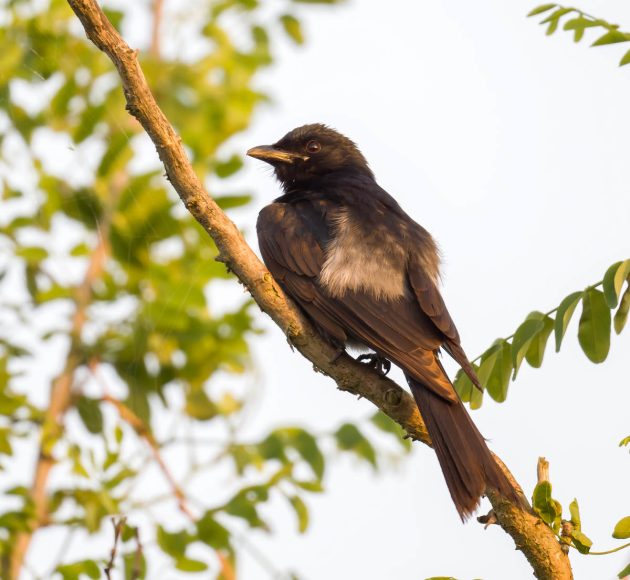
… Tiger Shrike …
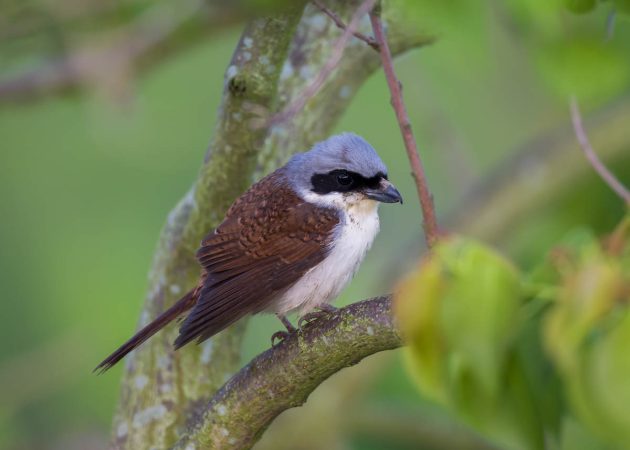
… Hair-crested Drongo …
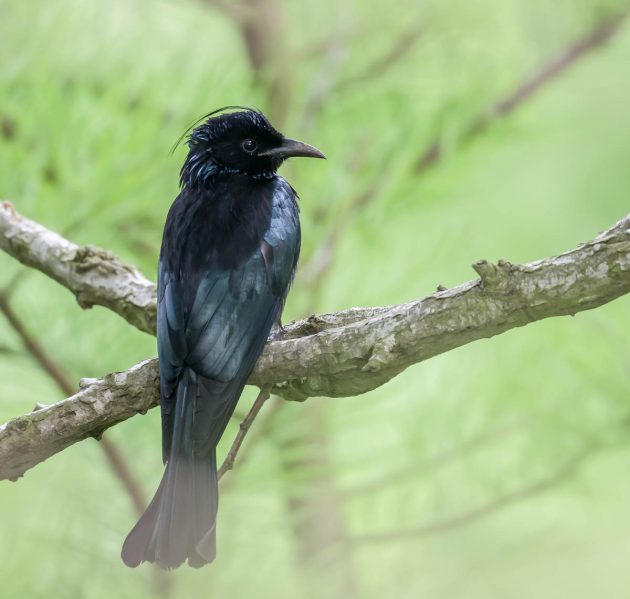
… Black-winged Stilt (also as a video and another very similar video) …
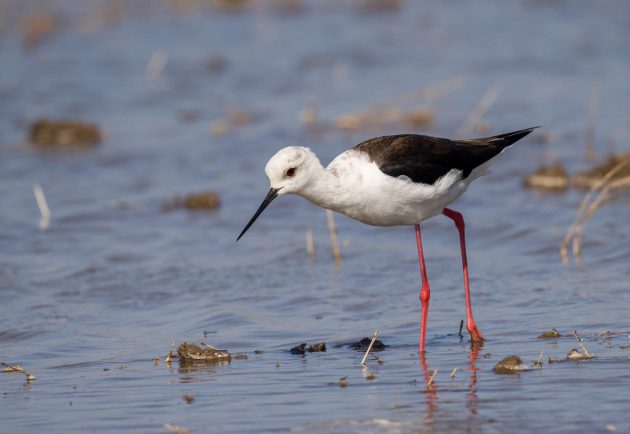
… Cattle Egret (also as a video and another very similar video) …
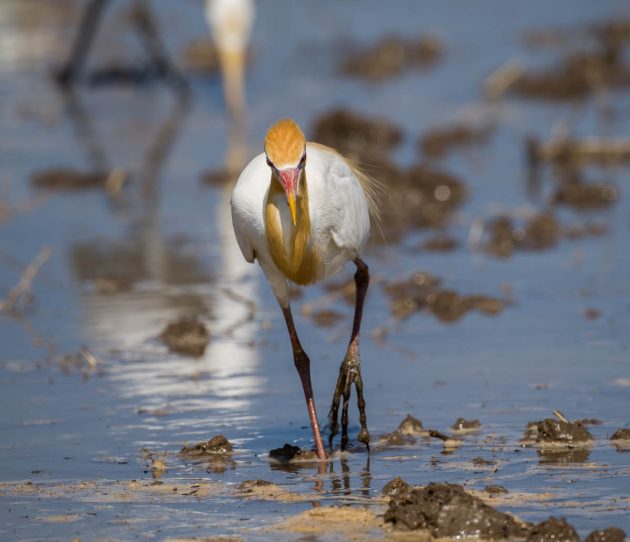
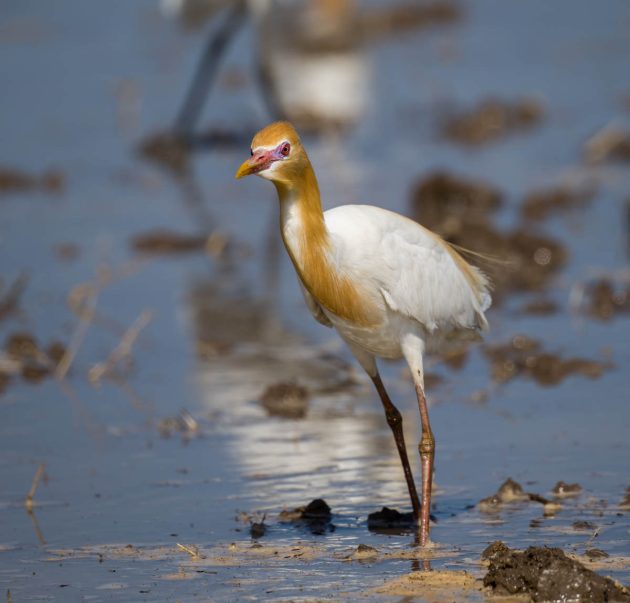
… and the Siberian Rubythroat.
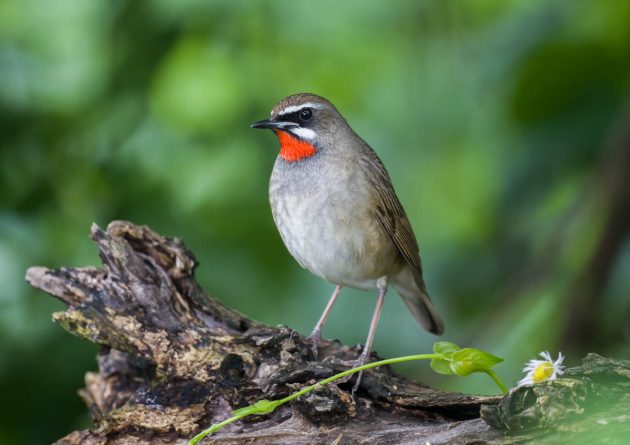
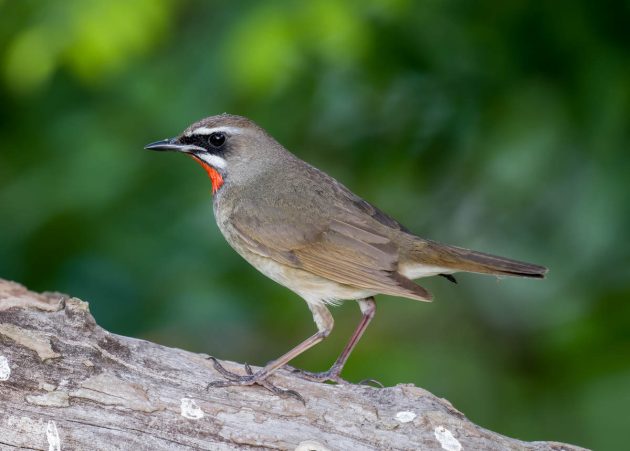
Finally, in the “Other” section of this post, the photo below illustrates a major scientific breakthrough. While it was traditionally believed that insects cannot read, the idea that the pose taken up by the dragonflies in the photo could have been struck without an intimate knowledge of the Kamasutra is rather preposterous.
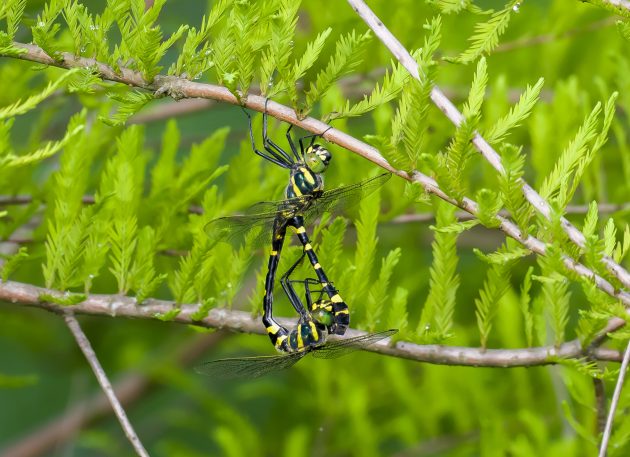











Great post, I missed a few previous posts and I see that now you have added videos to your arsenal. I love the lesser coucal’s one as the audio is also there. I can foresee the next evolution step: a monthly documentary, well edited, with soundtracks from the catalog of Kai (of course you need the rights) and Kai’s voice to go through the videos and photos with the two ne and jokes we all enjoy and have been accustomed to, a la Werner Herzog. Come on Kai, that would be awesome.